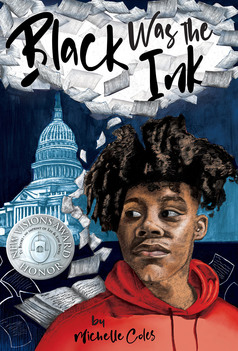Black Was the Ink
Review
By School Library Connection
Being sent to his family's farm in Mississippi after an altercation with police in his Washington, D.C., neighborhood is 16-year-old Malcolm's idea of punishment, and he is certain that he will be bored without wi-fi and friends. However, when he discovers a diary that once belonged to his ancestor Cedric, things get very interesting. Malcolm is visited by Cedric, who often and unexpectedly transports him to the mid-19th century. As if this is not disorienting enough, Malcolm inhabits these journeys to the past in Cedric's body! As he reads more of the diary and becomes better at impersonating his great-great-grandfather, Malcolm learns about Black leaders from the Reconstruction era about whom he never read in history class. He also realizes that the injustices his ancestors fought against, such as discrimination, voter suppression, and police violence, were very similar to those that he is witnessing in his own time. Malcolm's family has suffered a lot: his father was killed by police in a case of mistaken identity, much of the family farm was taken to build a highway, his uncle was incarcerated for most of his life for a minor infraction, and Malcolm himself was arrested after barely escaping gunfire on the basketball court. His bitterness and anger slowly turn to resolution and determination as he uses the lessons he learns in the past to fight for the rest of the farm when it is threatened. Along the way, Malcolm meets an attractive young neighbor girl as well as an extended family he never knew he had and begins to consider a future that includes a college education. There is so much packed into this hefty novel which at times reads like a history book, full of detailed backgrounds of historical figures and their speeches. Although the language and character would appeal to middle school readers, the book's subject matter and length may be better suited for higher grades.







